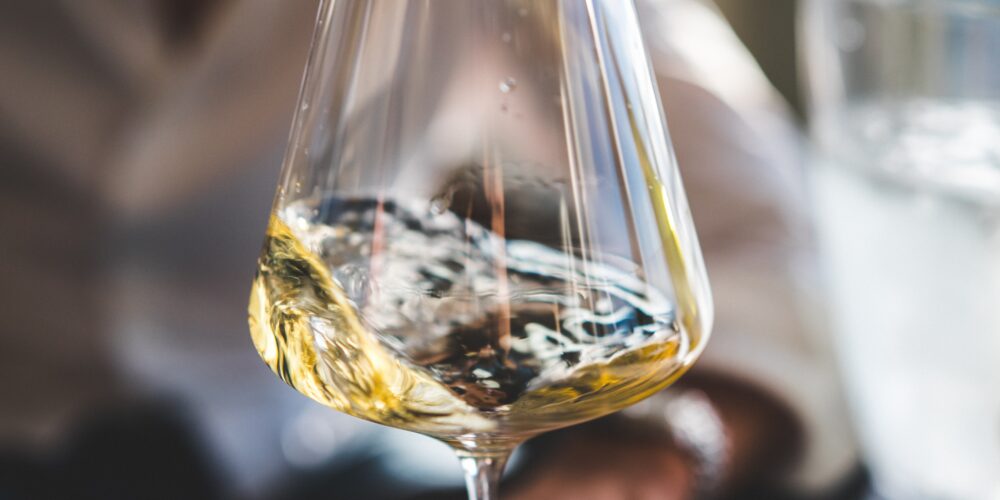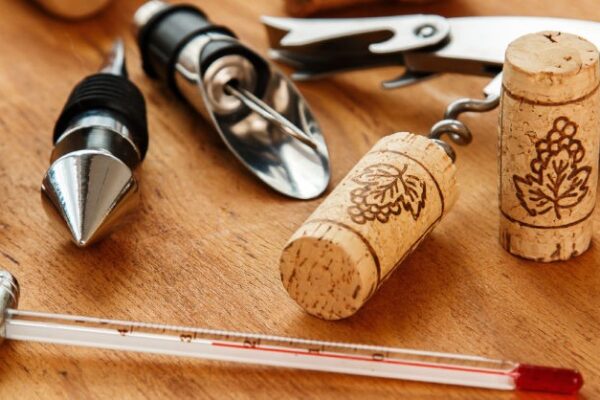Suggesting and serving a wine to your customer requires a good command of the specific vocabulary used to describe wine. While some terms like “colour” will be familiar to you, others like “chewing” or “aeration” might be unclear. In this article, learn all the technical jargon and key terms you’ll need to talk to your customers about wine like a professional.
Sensory evaluation
The technical process of describing a wine is known as the sensory evaluation. This involves examining the wine’s appearance, the range of aromas on the nose and the flavours and textures experienced on the palate. While such evaluation can be done in great detail and to an extremely technical level, the three main things to remember when describing a wine to a customer are appearance, nose and palate.
Wine’s appearance
Describing a wine’s appearance is essentially about desribing its colour. This varies from one wine to another and provides some crucial information, particularly about the wine’s age or stage of development. A youngish red wine, for example, will tend to be purple to ruby red in colour while a more mature one will lean towards brick red or tawny. Many adjectives can be used to describe wine, most of which are meant to make the wine sound enticing.
Colour aside, we also use the words hazy, clear, crystal-clear or brilliant to describe the appearance of a wine.
- For the colour of a white wine, you may use: pale lemon, lemon-green, yellow yellow-gold, gold or amber (the former apply to younger wines and the latter to more mature wines).
- For reds: purple, ruby/cherry red, crimson (young wines), brick red, garnet or tawny (older wines).
The nose
For the nose, the first thing to identify upon smelling a wine is whether it has any defects (for example if the wine is corked). Once you have established that the nose is ‘clean’, you can move on to describing the perceived aromas. Five main families of aromas are typically mentioned: fruit, floral, herbaceous, animal and empyreumatic or roasted.
- In the fruit category, some examples are lemon, pineapple, apple or quince – aromas typically found in white wines – or strawberry, blackcurrant, redcurrant, cherry and plum, which are common descriptors for reds
- Floral aromas include ones like hawthorn, acacia, linden, rose and violets
- Animal aromas are those like leather or musk
- Finally, empyreumatic aromas are those like smoke, roasted coffee, caramel or toasted almonds.
The palate
On the palate, flavours and textures mingle together. This part of the sensory evaluation assesses whether the wine is balanced, or in other words how its acidity, sweetness, bitterness, salinity and alcohol combine together.
- The acidity of a wine can be described in a number of possible ways (listed here from low acidity to high), like flat, flabby, soft, crisp, fresh and lively. For really high-acid wines, you’ll even find terms like green, tart, biting, sour or aggressive.
- For sweetness, there are special terms, too. Mellow, soft, and rounded can be used to describe wines that are slightly sweet, while syrupy, heavy or sickly might be used for a wine at the high end of the sweetness scale.
- In terms of its alcohol sensation, a wine can be watery, flat, weak or light, if it has low alcohol, or heady, powerful, hot or burning where the impression of alcohol is high.
- Rough or harsh are jargon for (too much) bitterness and briny, salty or sea breezy describe a saline character in wine.
Other terms used in serving and tasting wine:
Aroma & flavour: We distinguish the aromas that you smell on the nose from the flavours that you taste on the palate (even if these flavours are actually produced by retro-nasal smells).
Chewing a wine: Moving wine around the mouth (in a chewing motion) to allow air into it in order to trigger retro-olfaction and make the flavours stronger.
Organoleptic: (adj.) Which makes an impression on the senses, i.e. for tasting, all five senses are stimulated – hearing (when the wine is served), sight, touch, smell and taste.
Sniff, swirl, sniff: The first sniff is a pre-swirl evaluation of the wine’s smell, which allows you tell if there is a defect or not. The second sniff, after “swirling”, is when you assess the aromas.
Aeration: The process of oxygenating the wine to bring out its aromas when it seems “closed” or inexpressive. Carafing is one way of doing this; “swirling” – where you spin the wine in the glass to increase its contact with air – is another.
Service temperature: This is the temperature at which the wine can be fully appreciated. A temperature of 11°C to 14°C is preferable for white and 16°C to 19°C for red.
Decanting: This allows solid particles to settle at the bottle of the wine bottle or carafe, making it possible to serve a wine that is clear.
Retro-olfaction: The action of air moving back up into the nose after having passed through the mouth – when you taste wine, volatile aromas travel from mouth to nose, and depending on the wine’s complexity, provide additional information to that detected from simply smelling the nose.
Example of winespeak in practice:
Presentation of a red wine: This stunning, cherry red coloured wine is full-bodied and superbly elegant. The nose is deeply intense with blackcurrant, blackberry and violet notes, while the palate is slightly spicy with lovely tannins.
Presentation of a white wine: Try a superb Muscadet from Domaine Bruno Cormerais. Its pale lemon-gold colour is a great contrast with the powerful evolved aromas of apple, pear and baking spices on the nose. On the palate, this wine continues to surprise with its zippy energy. This premium white wine from the Nantes wine region will go extremely well with your food.
As you can see, it is recommended to employ flattering vocabulary when making a general presentation of the wine you will be serving to customers.
Learn more
Presenting a wine to your customer is one thing, but being able to explain why it will pair brilliantly with the dish that they have ordered will make you even more of a pro! Learn how to do it in our article Five food & wine pairing rules to remember.



